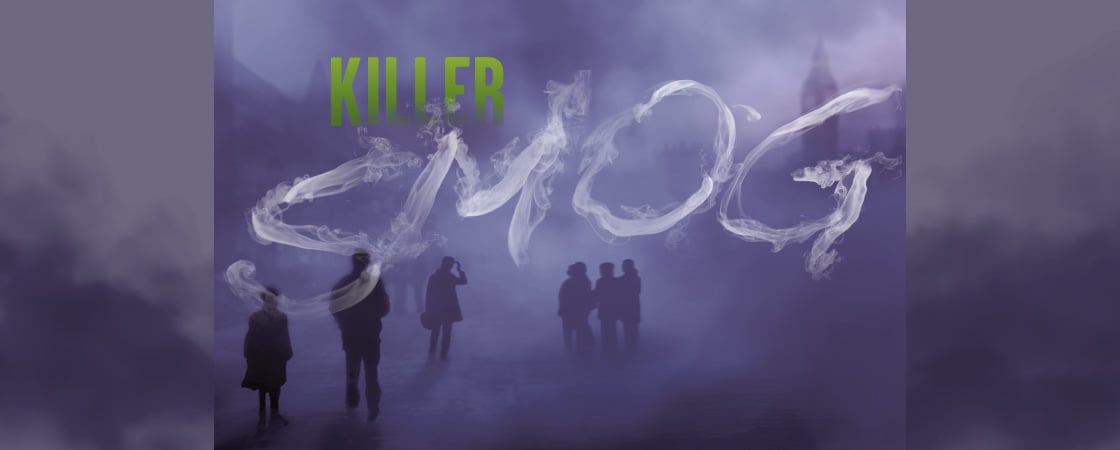What few people understood was that smog wasn’t just dirty and smelly—it was also dangerous. The smog contained toxic chemicals and particulates—very small bits of particles that get trapped in the air. In the case of London’s smog, those particulates included tiny specks of unburned coal. As Brian and his family searched outside for Tarzan, this poison was filling their lungs.
Even before scientists fully understood smog’s impact on the human body, there were signs that it was harmful. On pea soup smog days in London, schoolkids hunched over their desks, wheezing and hacking as they tried to do their work. Elderly people collapsed in the streets. Emergency rooms routinely filled with patients showing signs of smog-related respiratory problems, such as asthma and pneumonia.
Chemicals and particulates in smog can damage the lungs—permanently. Still, decades went by and few steps were taken to reduce air pollution.
Until the Great Smog of 1952.
This smog was different from others before it, more extreme and longer-lasting. Frigid weather meant that people were burning more coal than usual to stay warm. What’s more, a weather system was causing cold air to be trapped under the warmer air above it. There was no wind—nothing to clear away the smog.
So day after day, London remained dark. Schools stayed closed. Workers couldn’t get to their jobs. Even funerals were canceled; grieving relatives couldn’t see well enough to drive from churches to cemeteries to bury their loved ones.
By day three of the smog, there was some good news at the Bone house: Tarzan had somehow made his way home. But Brian couldn’t do much celebrating. He was sick in bed with a burning, painful cough. He felt as though the smog itself was trapped inside his chest.
All over London, others were falling ill too—thousands and thousands of people. At first, most doctors believed people were suffering from the flu or other common winter illnesses. Even scientists did not immediately make a direct connection between the smog and the many coughing and wheezing people staggering into hospitals.
London was in the grips of a disaster. The smog wasn’t just making people sick. It was killing them.
By the time the smog finally cleared on the fifth day, more than 4,000 people had died. In the coming months, roughly 8,000 more would die from smog-related illnesses.



